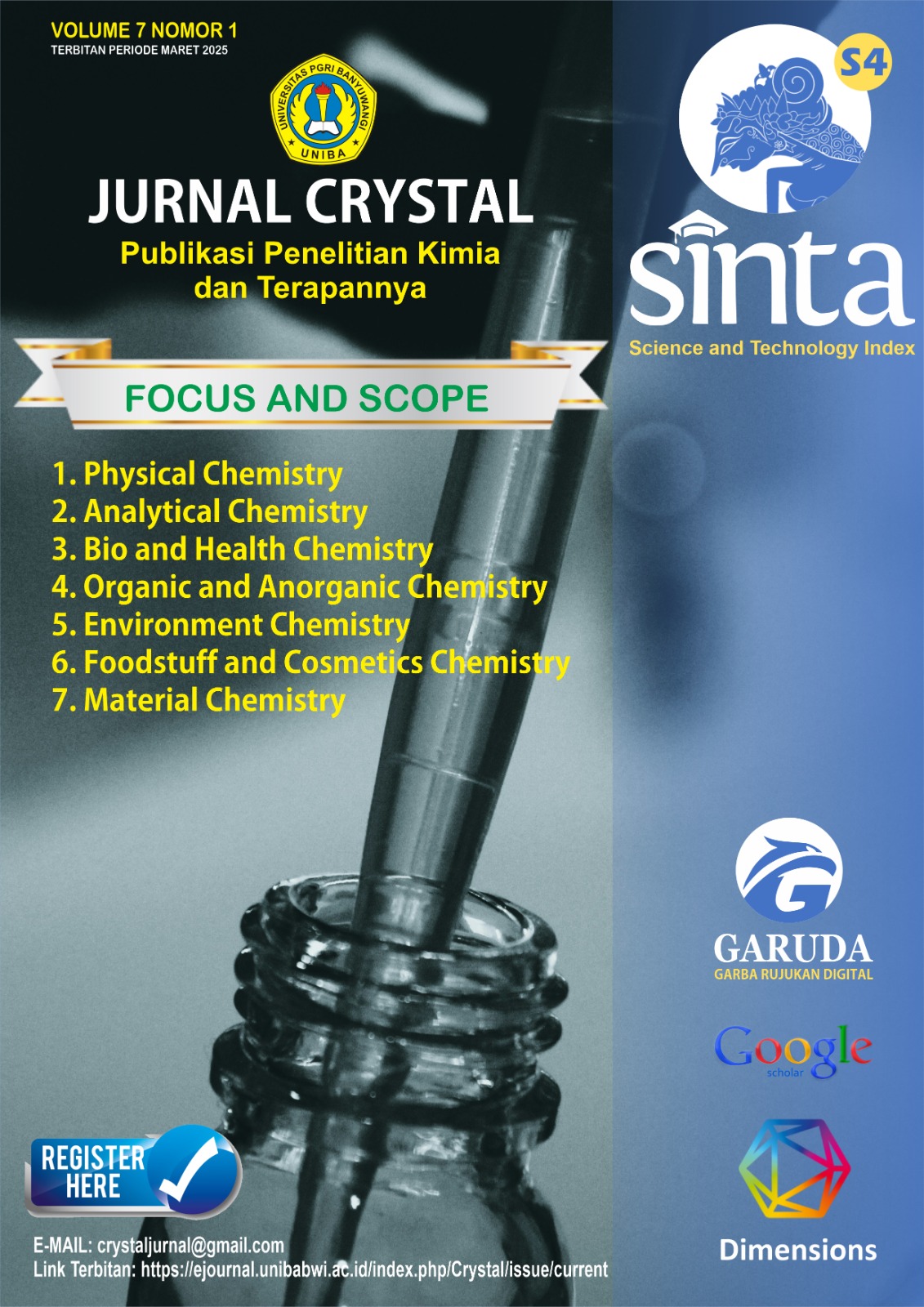ISOLASI DAN KARAKTERISASI SENYAWA ALIFATIK TAK JENUH DARI KULTUR AKAR MORUS CATHAYANA
DOI:
https://doi.org/10.36526/jc.v7i1.4852Keywords:
Morus cathayana, unsaturated aliphatic, steroid, terpenoidAbstract
Moraceae is a plant that is widely distributed in Asia and the Indopacific Islands. One of the genera of Moraceae that has been widely researched and whose bioactive compounds is the Morus, namely M. cathayana. the aim of this research is determining the diversity of secondary metabolite of root cultures of Morus cathayana. Isolation of secondary metabolites from Morus cathayana root cultures was using several chromatographic techniques and eluents combination is n-hexane, acetone, chloroform, ethyl acetate and methanol. In this research, the compound KMAC-4 was isolated. Characterization of the KMAC-4 compound using the FTIR ONE Perkin-Elmer spectrophotometer. showed that the KMAC-4 compound had an absorption at wave number (cm-1): 3654.97; 3650.45; 2936.87; 1718.71; 1465.76; 1381.56; 1049.50. Based on IR spectrum data that has been interpreted, analyzed and studied according to the phytochemical of the Morus, it can be concluded that the KMAC-4 is an unsaturated aliphatic compound which belongs to the steroid or terpenoid group.
References
Fessenden, R. J. JS Fessenden. (1982). Organic Chemistry. 2nd. ed. Prindle: Weber & Schmidt Publishers.
Hakim, A. (2011). Keanekaragaman Metabolit Sekunder Genus Artocarpus (Moraceae). Nusantara Bioscience, 2, 146–156.
Larkin, P. (2017). Infrared and Raman spectroscopy: principles and spectral interpretation. Elsevier.
Ni, G., Zhang, Q. J., Wang, Y. H., Chen, R. Y., Zheng, Z. F., & Yu, D. Q. (2010). Chemical constituents of the stem bark of Morus cathayana. Journal of Asian Natural Products Research, 12(6), 505–515. https://doi.org/10.1080/10286020.2010.489817
Ni, G., Zhang, Q. J., Zheng, Z. F., Chen, R. Y., & Yu, D. Q. (2009). 2-Arylbenzofuran derivatives from Morus cathayana. Journal of Natural Products, 72(5), 966–968. https://doi.org/10.1021/np800789y
R, V. K., & Chauhan, S. (2008). Mulberry : Life enhancer. J. Med. Plants Res., 2(10), 271–278.
Shen, R. C., & Lin, M. (2001). Diels-Alder type adducts from Morus cathayana. Phytochemistry, 57(8), 1231–1235. https://doi.org/10.1016/S0031-9422(01)00171-6
Zerega, N. J. C., Clement, W. L., Datwyler, S. L., & Weiblen, G. D. (2005). Biogeography and divergence times in the mulberry family (Moraceae). Molecular Phylogenetics and Evolution, 37(2), 402–416. https://doi.org/10.1016/j.ympev.2005.07.004
Zhekun, Z., & Gilbert, M. G. (2003). Moraceae: Flora of China vol. 5. Flora of China Editorial Committee. St. Louis: Missouri Botanical Garden Press.















